For those who greatly enjoy learning about and tasting wine, a day spent wine tasting in Nemea is a must. On a Sunday morning members of Travel Bloggers Greece were invited on a wine tasting trip to explore the wonders of this bountiful wine region.

Where is Nemea?
Nemea is one of the most historical wine regions in Greece. The first traces of the wine production in the region trace back to the writings of Homer who called it Ampeloessa, which translated as full of vines. Situated in the Peloponnese, approximately one and a half hours from Athens, it is home to some of the most prominent wineries in Greece.
Nemea is famous for the Agiorghitiko grape or St. George which has a distinct deep red colour and complex aroma which leaves a velvety palate.
Wine Tasting in Nemea
We arrived in Nemea around noon excited to learn all about the wine making in this famous region and to savour some of the best wines cultivated and produced here.
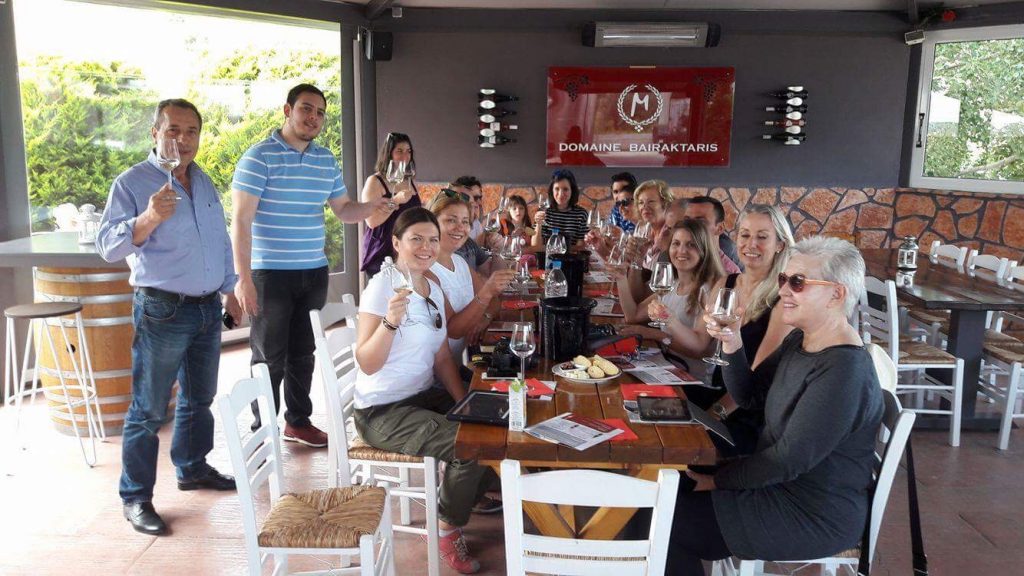
Domaine Bairaktaris
Our first stop was at the Domaine Bairaktaris, located right at the entrance of Nemea at the foot of the Panagia Mountain, shadowed by the temple of Nemean Zeus.
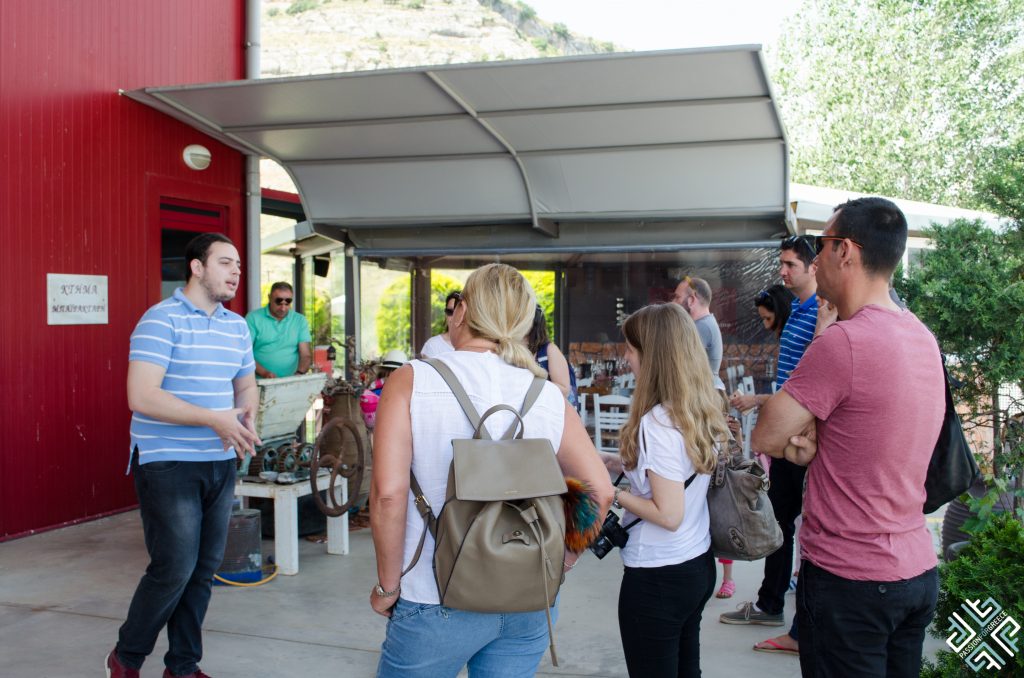
The winery began operating in 2005 when a family of farmers made their grandfather’s dream a reality by taking the wine production one step further — they started producing their own wine.
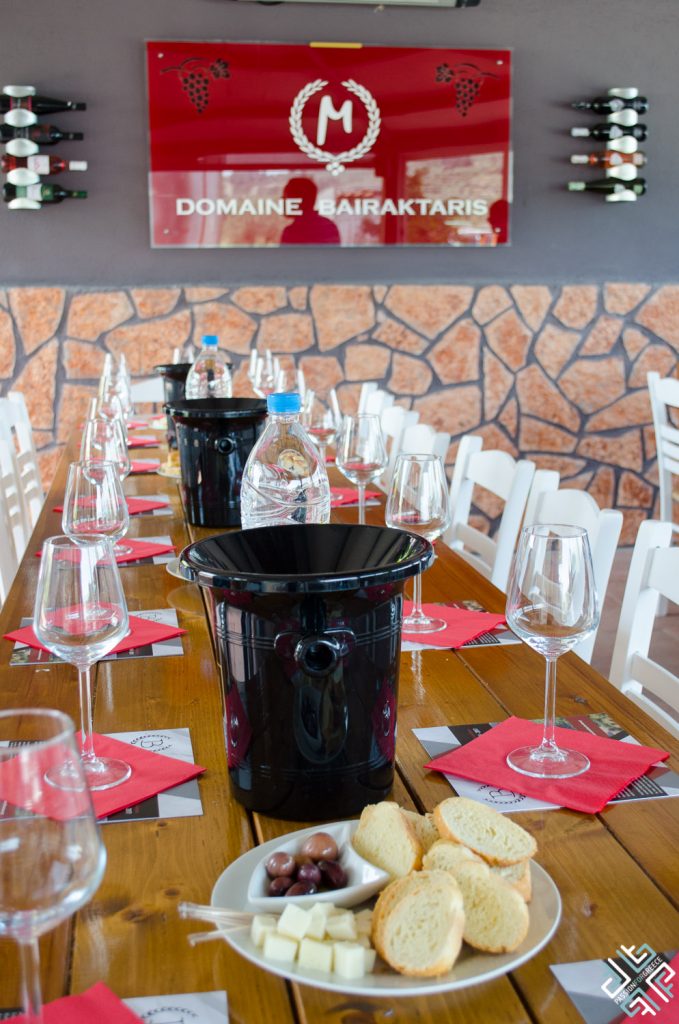
Today the winery is operated by Christos and his son Nikos, their goal is to produce a wine which maintains the original flavours and fragrances thus no yeast and chemicals are used in the production.
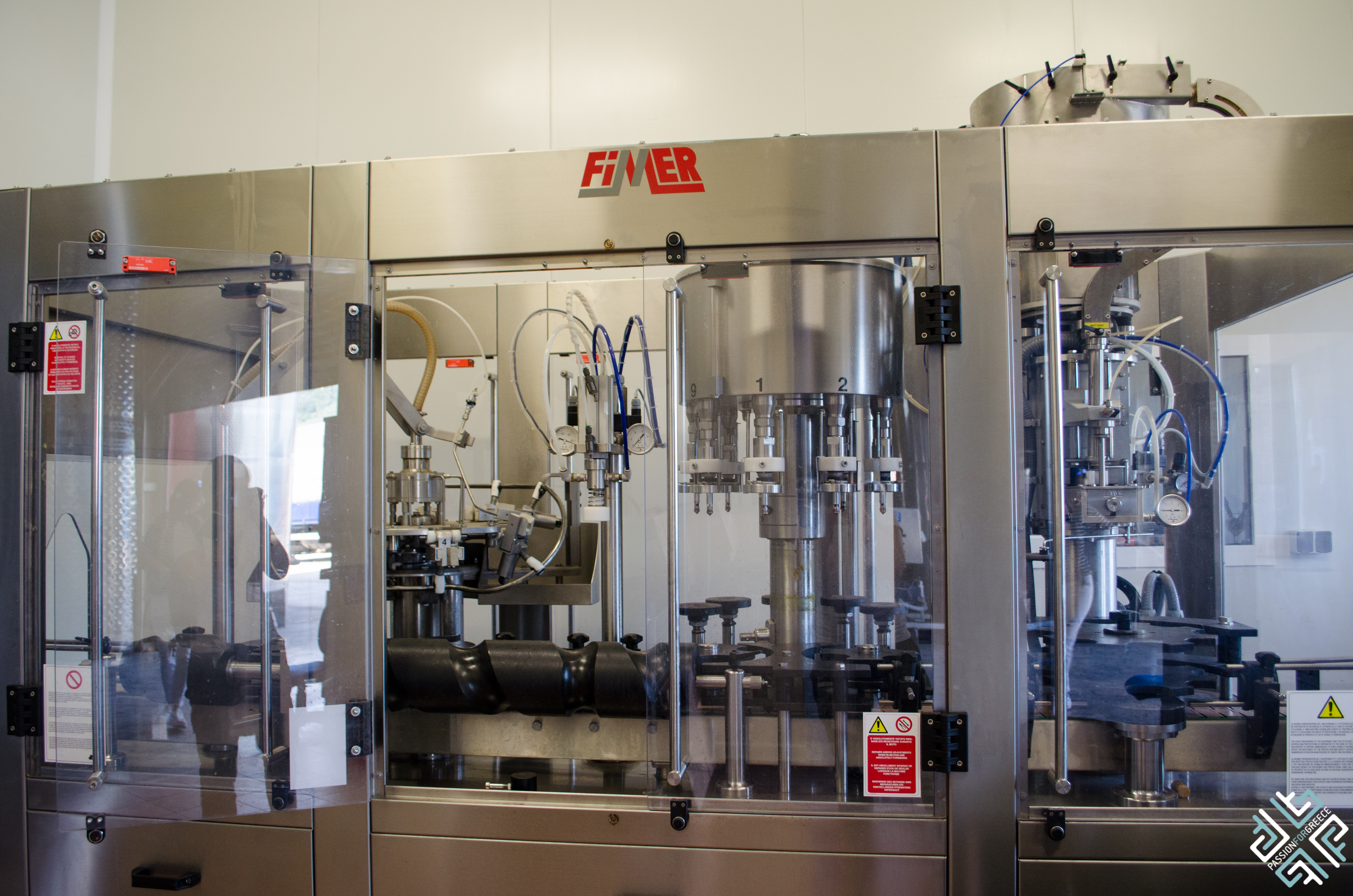
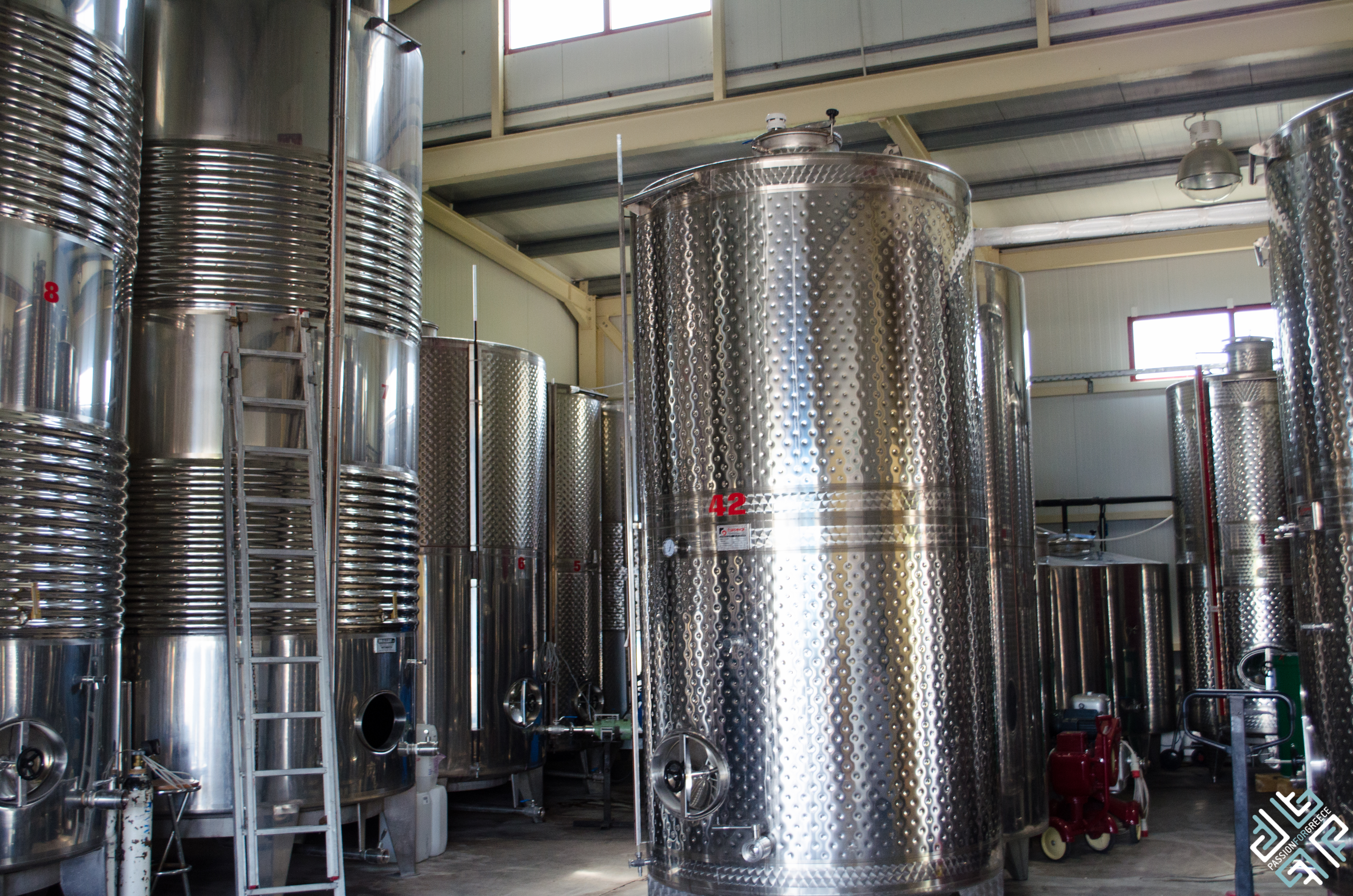
Nikos took us on a tour of their winery and explained the wine production process. The winery is set on 17 hectares of land. Grape harvest takes place during the month of September after which the grapes are kept in refrigerators for about 8-12 hours, to cool off.
The grapes are then placed into the wine makers for the extraction of the natural juice.
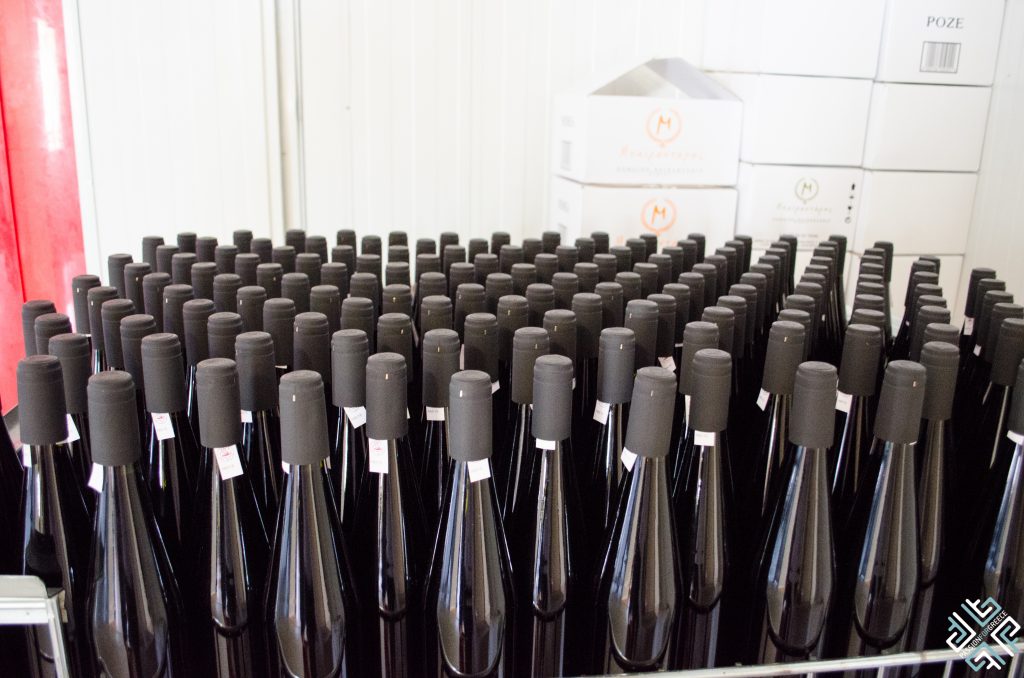
Domaine Bairaktaris produce around two hundred thousand bottles a year out of which 15% is sold at the winery and 20% is exported to the United States, Germany, The Netherlands and Switzerland.
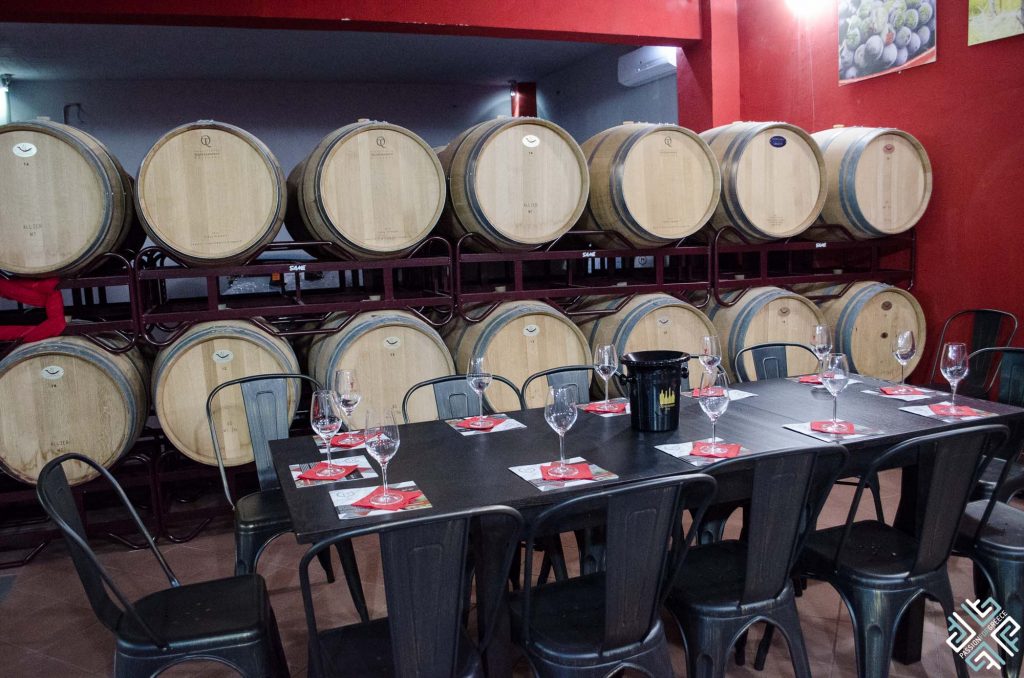
After the tour of the winery we continued with wine tasting of 5 wines.
Monolithos White: this refreshing white wine is a combination of Muscat, Chardonnay and Sauvignon Blanc grape varieties. It is rich in pineapple, banana and mango flavours.
Monolithos Roze: a blend of Agiorgitiko and Assyrtiko grape variety, this rose has a special colour and is rich in fragrances of pomegranate, cherry and sour cherry.
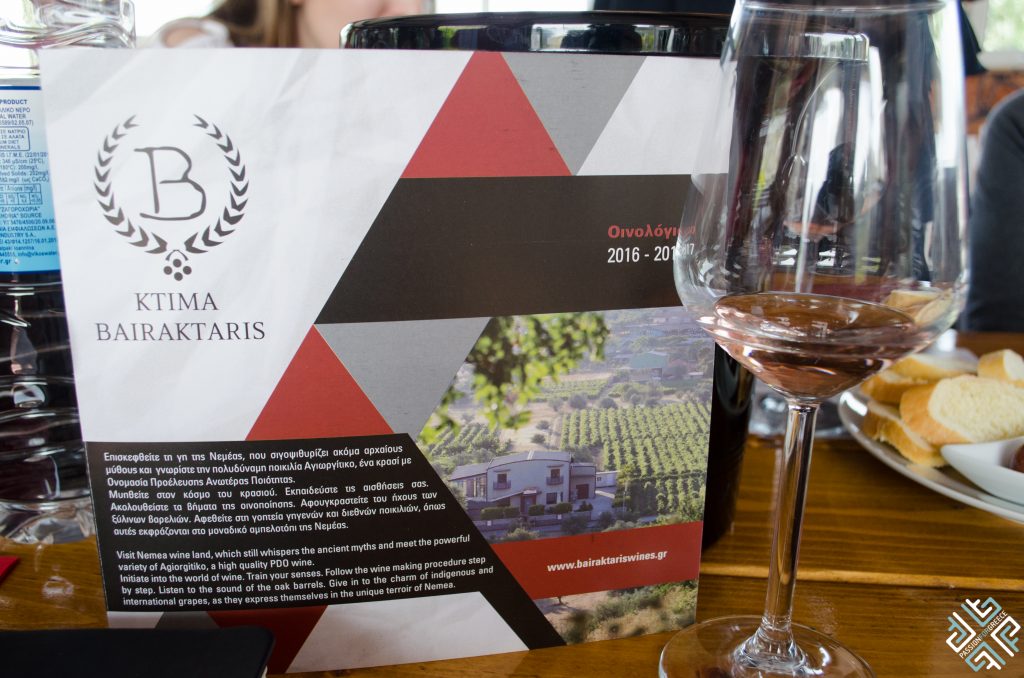
Monolithos Red: A red dry PDO Nemea wine made 100% from the Agiorgitiko grape variety. It has vivid purple hues and aromas of black cherry, raspberry and plum.
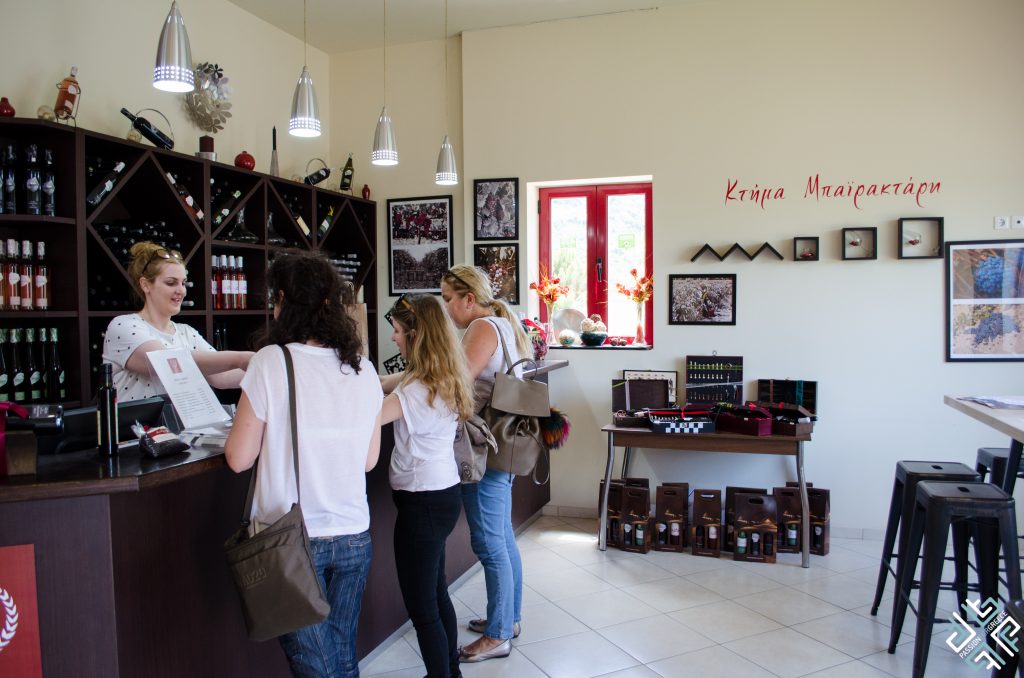
NEMEA Monolithos: A red dry PDO Nemea wine made 100% from the Agiorgitiko grape variety is aged for 16 months in new French oak barrels and are afterwards matured for 6 months in the bottle. With a soft round body and a shiny red colour it is rich in fragrances of matured red fruits, spices and vanilla.
Semi Sweet: This natural semi sweet wine is left to mature in the barrels for 12 months. Made out of 100% Agiorgitiko grape variety it is best accompanied with fruits and desserts.
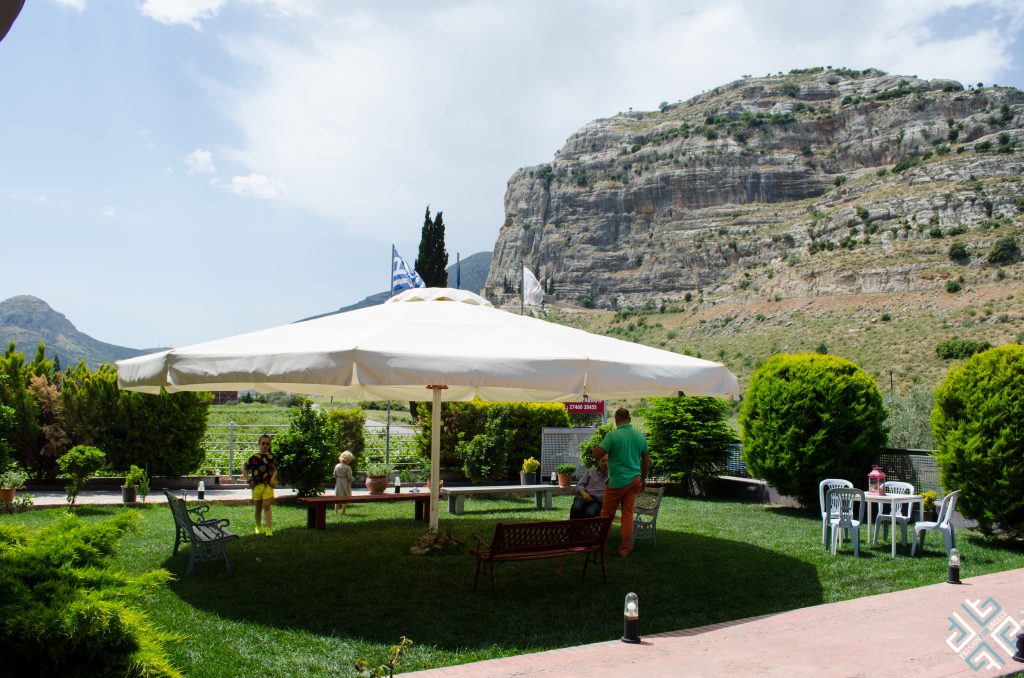
Palivou Estate
Next stop on our itinerary was at the Palivou Estate which was started in 1995 after an old traditional treading tank was replaced by a contemporary winery. This romantic winery with organic vineyards is set on 35 hectares of land and produces around 30 tons of wine on a yearly basis.
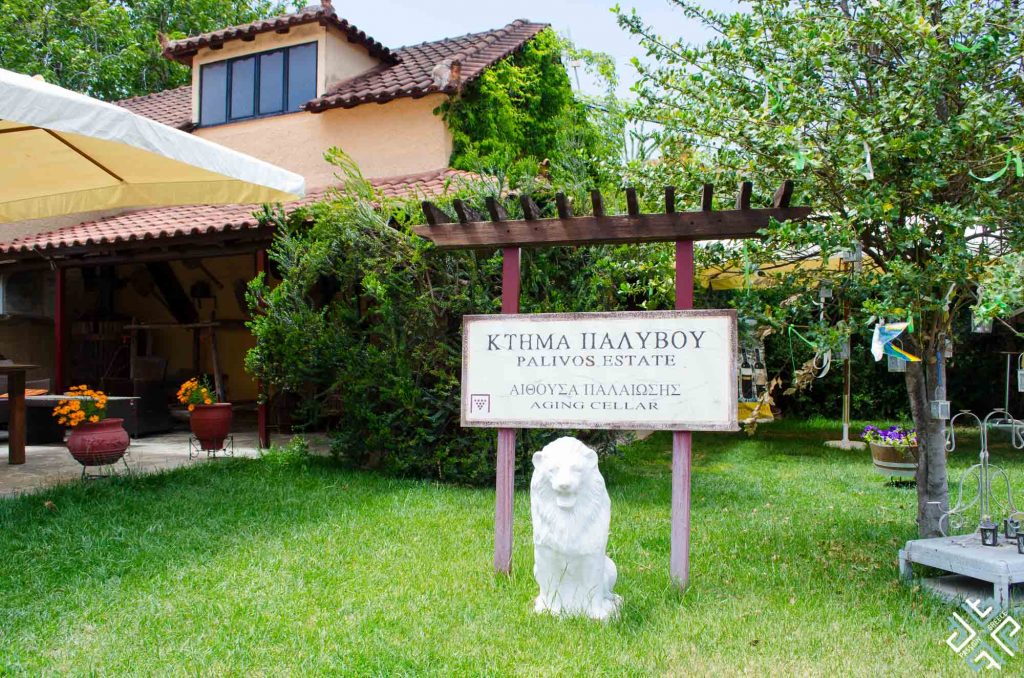
The main grape variety produced here is Agiorgitiko but other famous types like Rodites, Malagousia, Chardonnay, Merlot, Cabernet Sauvignon and Syrah can also be found here.
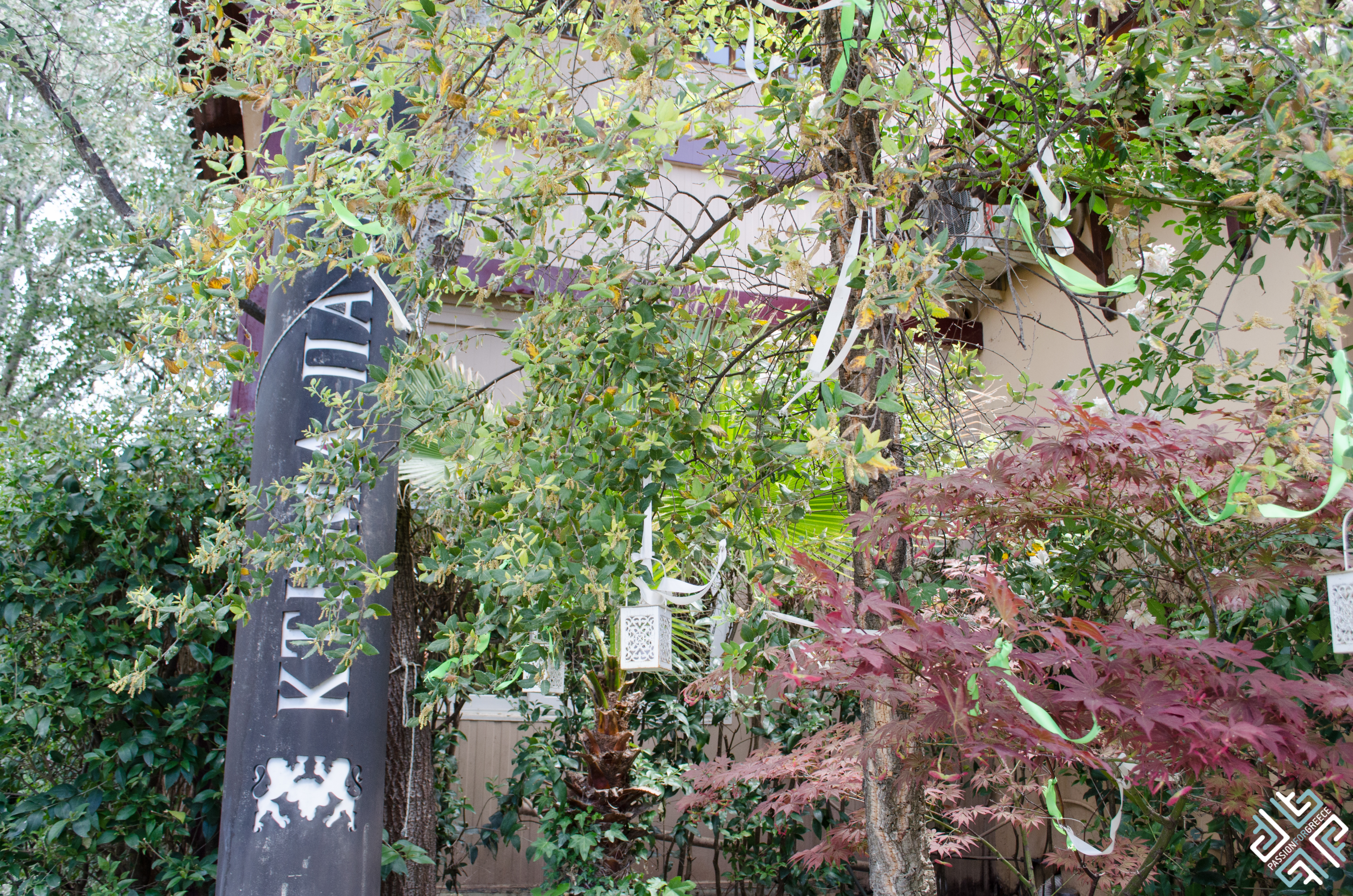

The Palivou Estate exports 50% of its wines to the USA and is also popular in Cyprus and China.
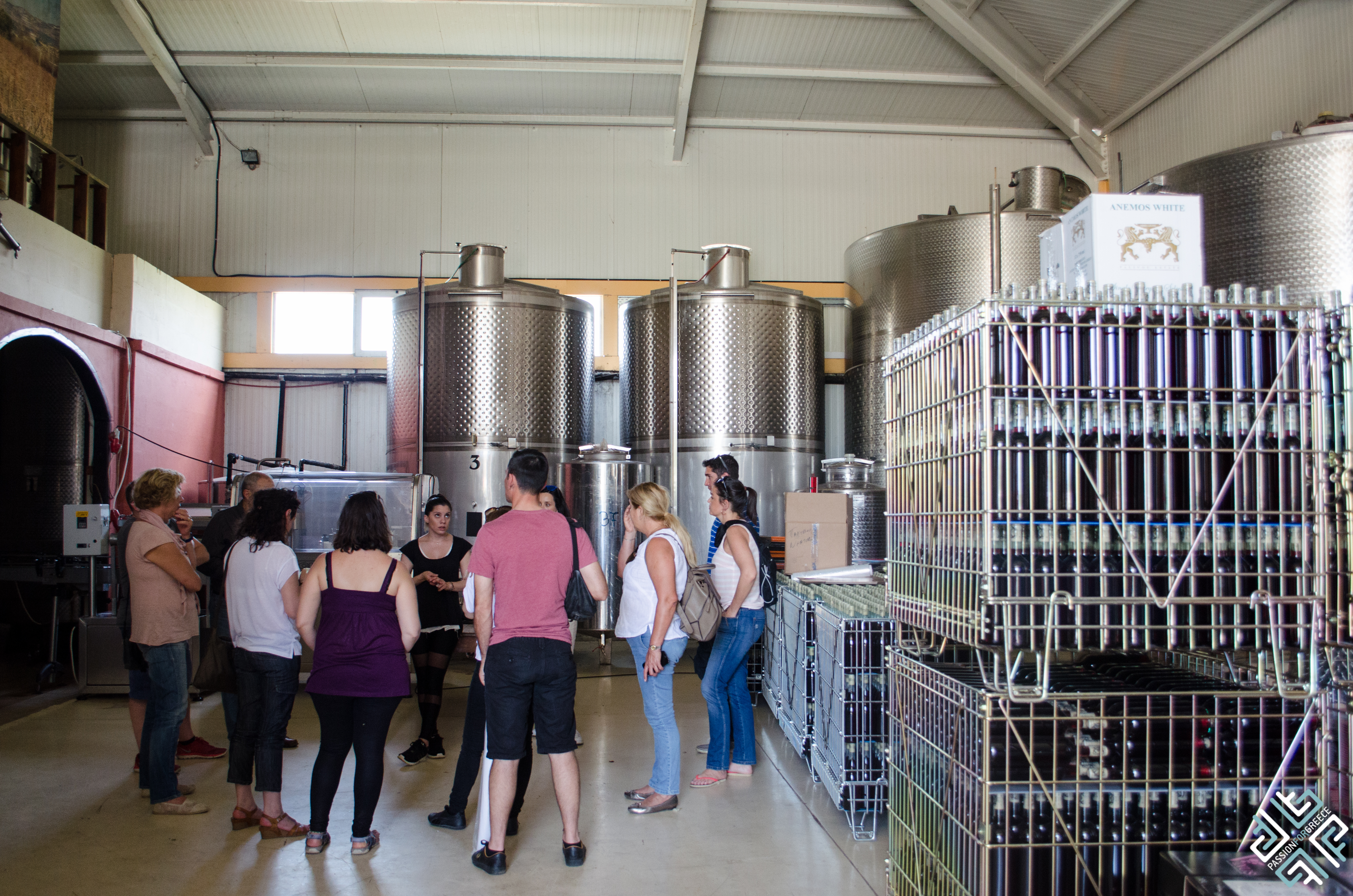

After a tour of the premises we sat down in the charming ageing cellar to savour some of the famous wines.

Stone Hills: A White Dry Wine, Protected Geographical Indication (PGI), Peloponnese
This fruity white wine is made from 50% Chardonnay and 50 % Malagouzia grape variety. A fine blend of aromas of banana, apple, pear blended with more mature characters of peach, apricot and orange aromas which are complimented by the Malagouzia variety.
This wine is well paired with seafood, pasta and salads.

Vissino: A Rose Dry Wine, Protected Geographical Indication (PGI), Corinth
Made of 90% Agiorgitiko (Saint George) and 10% Syrah.

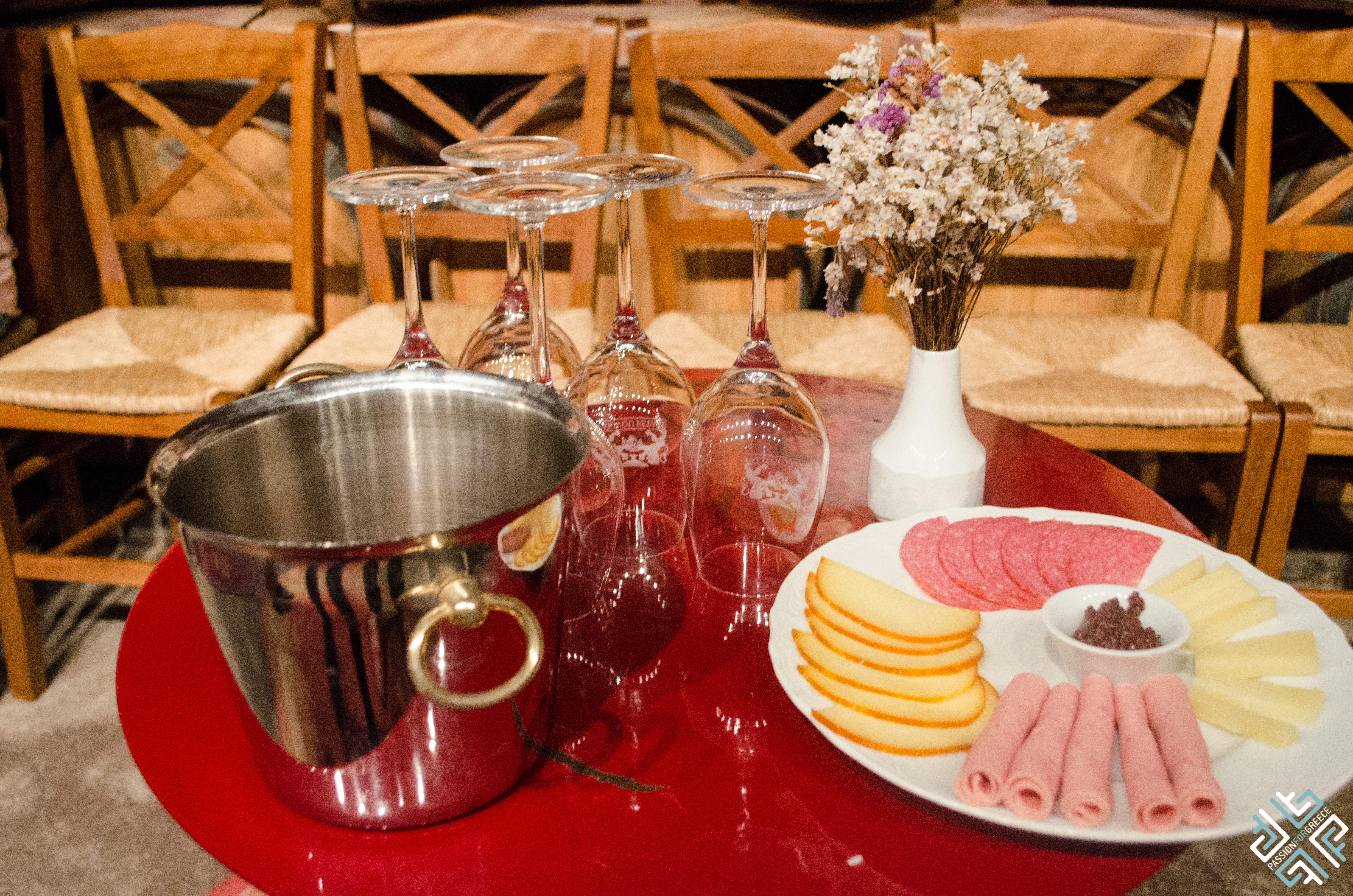
Palivou Estate NEMEA A Red Dry Wine, Protected Designation of Origing (PDO) Nemea is made out of 100% Agiorgitiko grape variety. It is a thick, dark colored wine with aggressive tannins. The wine is rich with impressive aromas of dark black cherries, vanilla with chocolate notes and toasted wood. It goes well with lamb and pork dishes.
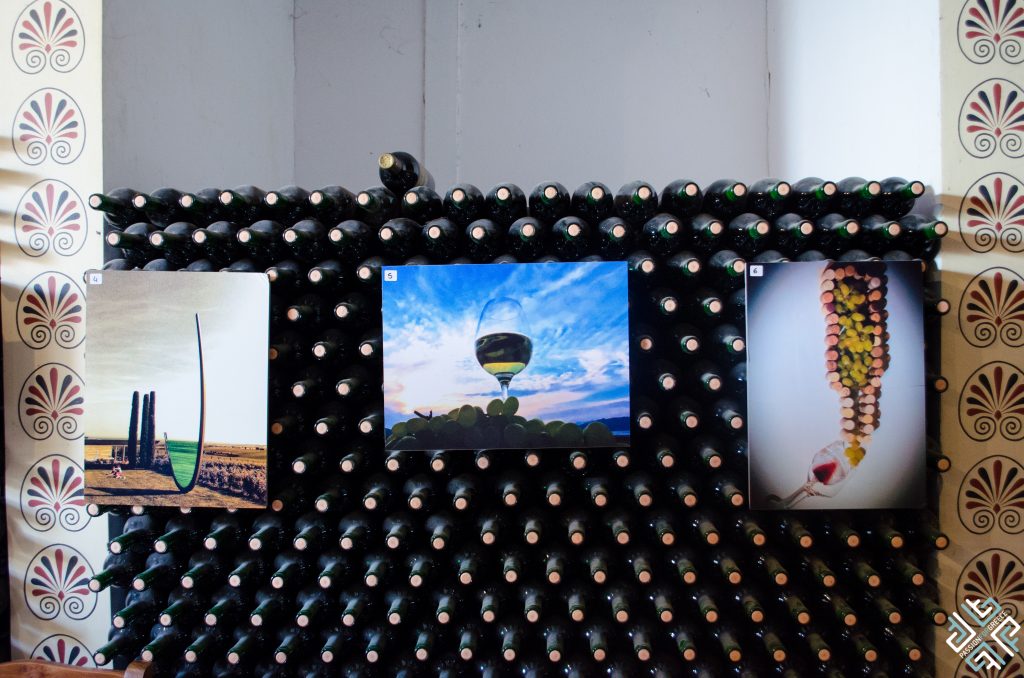
Ammos Terra Leon A Red Dry Wine, Protected Designation of Origing (PDO) Nemea is made out of 100% Agiorgitiko grape variety. The wine has a deep, dark and thick color with intense fruity nose of cherries, forest fruits and baked raisins in balance with the characters of vanilla, dried fruits and chocolate coming from the long aging process in the oak barrels (18 months). It can be kept for up to 10 years.
Lunch at Sofos Restaurant
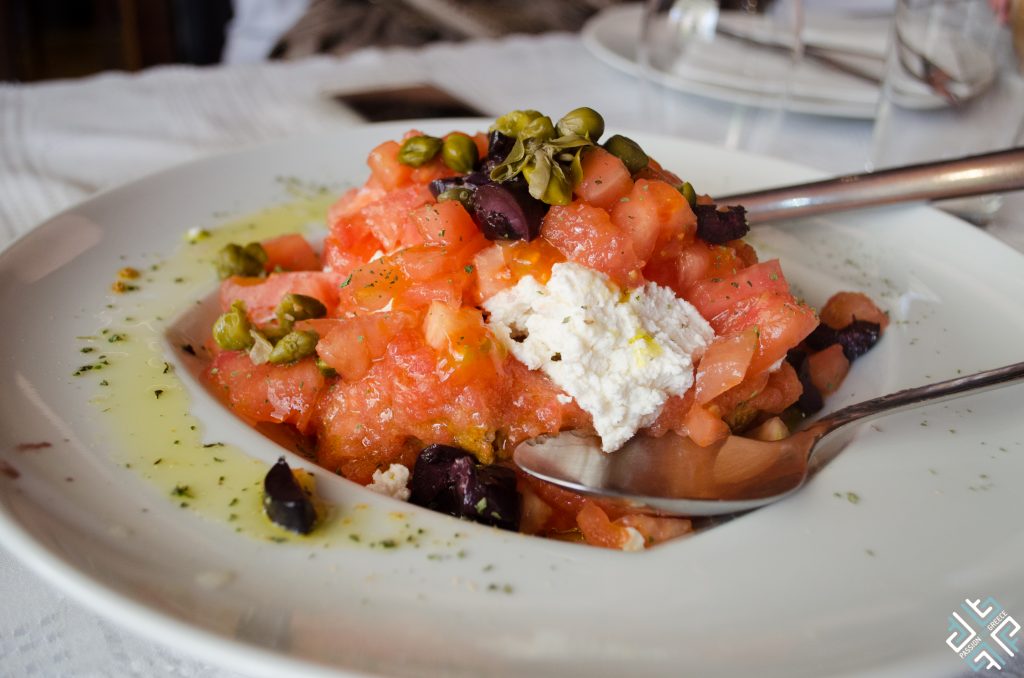
After the rewarding wine tasting sessions at the two wineries we enjoyed a beautiful lunch at Sofos Restaurant in the heart of Nemea. We had a choice of two salads, a refreshing Dakos and a green salad with croutons and corn, a delicious baked aubergine topped with cheese dish, tender beef served with mashed potatoes and chicken with pasta.

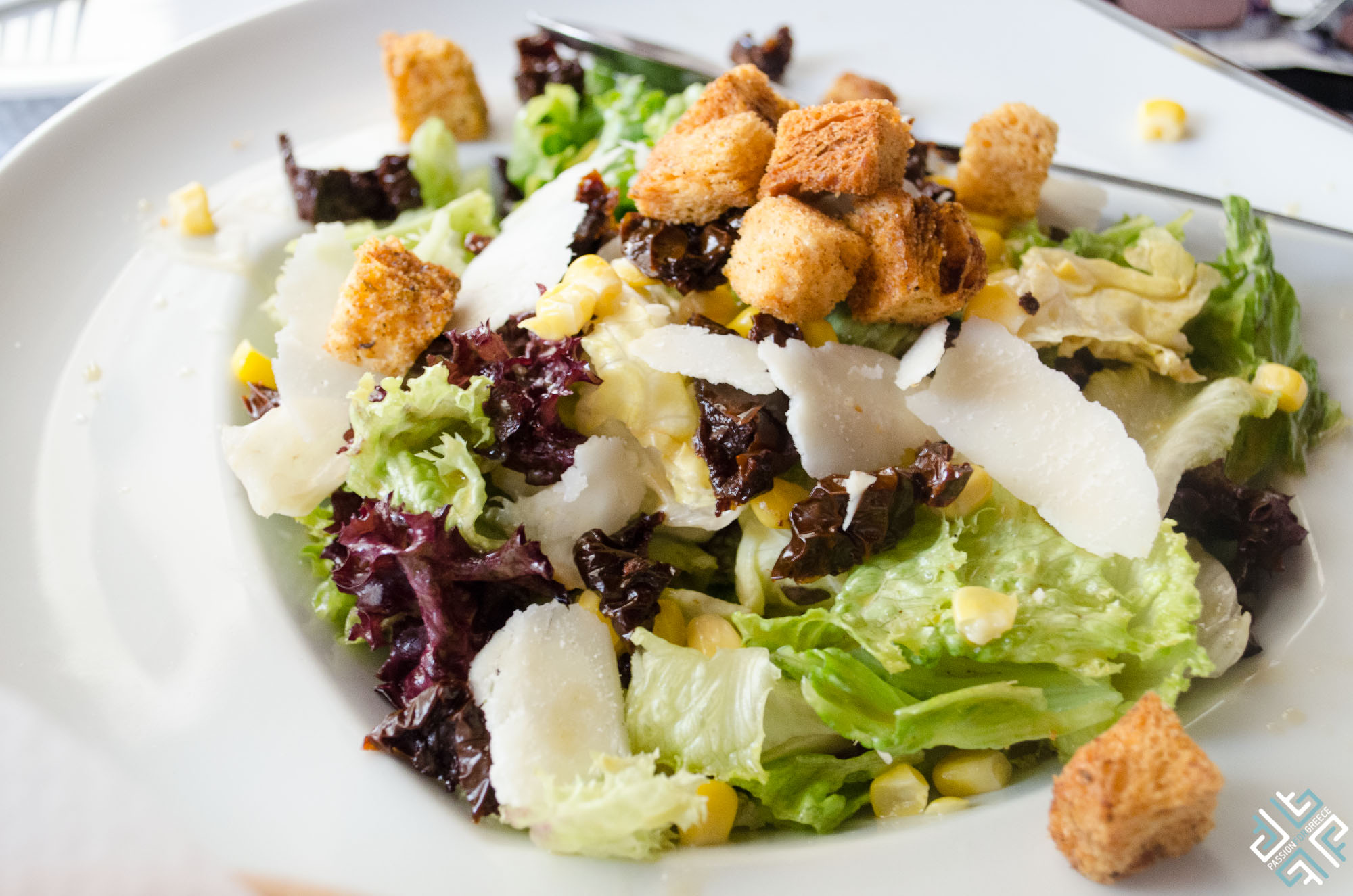
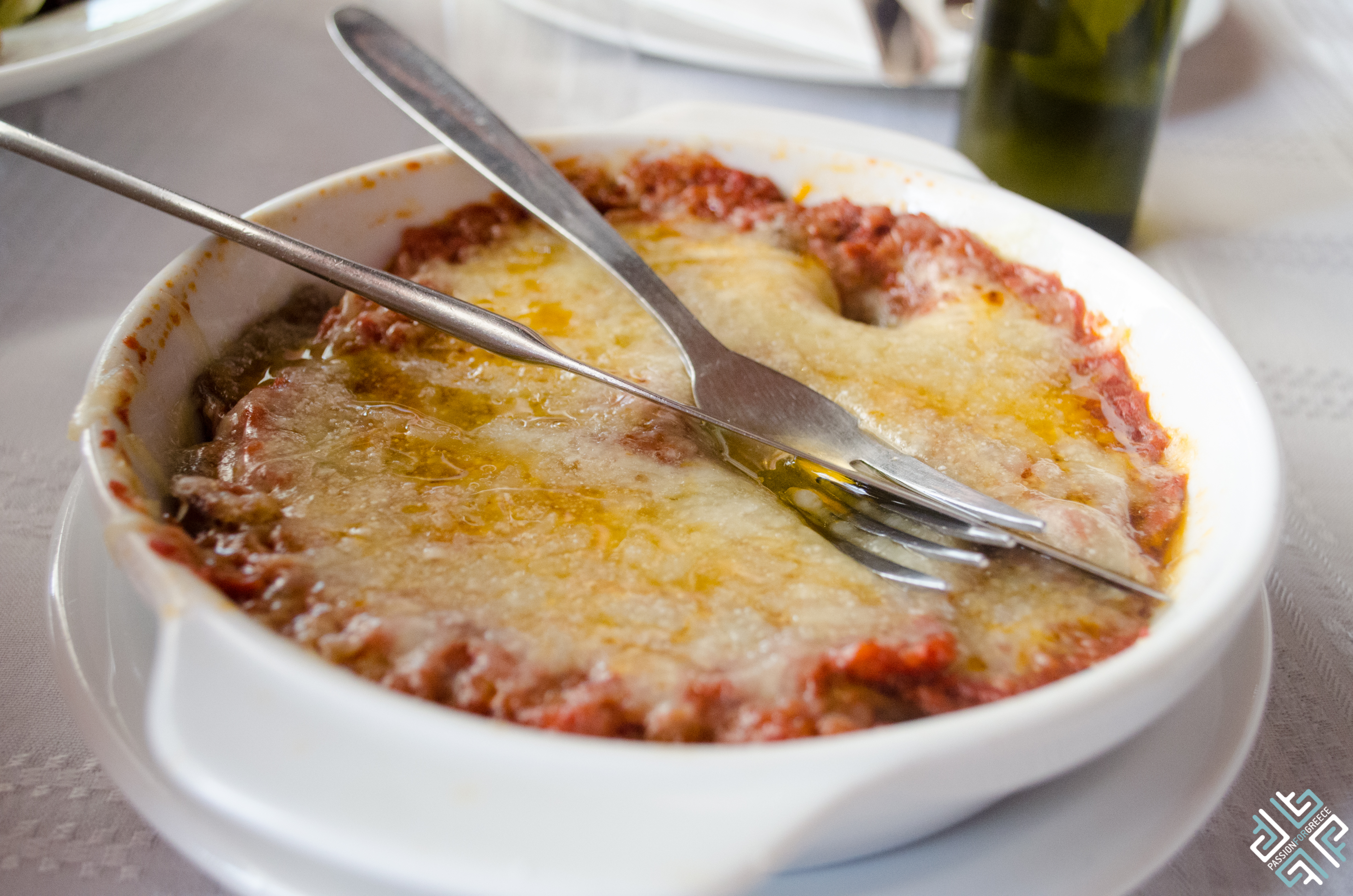

For dessert we had crème caramel. The meal was accompanied by red wine.
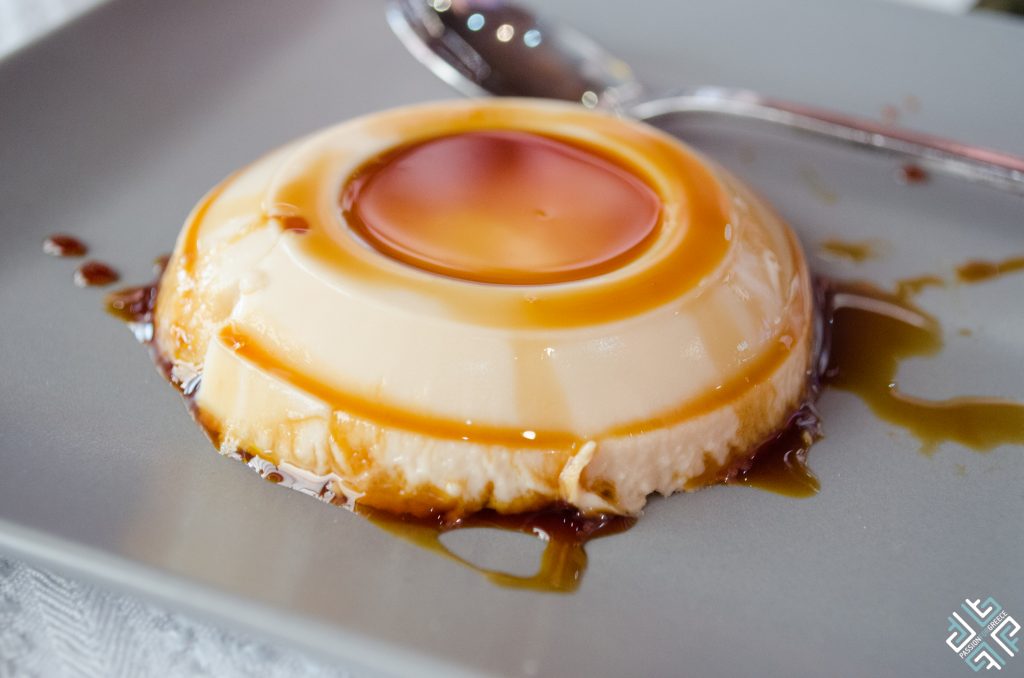
Ancient Stadium of Nemea
The last stop of our Day trip was at the Ancient Stadium of Nemea which lies 450 meters south-east of the Sanctuary of Zeus. It is here that the Nemean Games took place, one of the four Greek festivals which had a Panhellenic status.

One of the myths has it that the games were held to commemorate the death of Opheltes, the son of Lycurgus, king-priest of Nemea. Another myth points to the fact that Hercules wanted to thank Zeus for helping him defeat the lion of Nemea. The Games took place every two years and included musical, theatrical and athletic events.

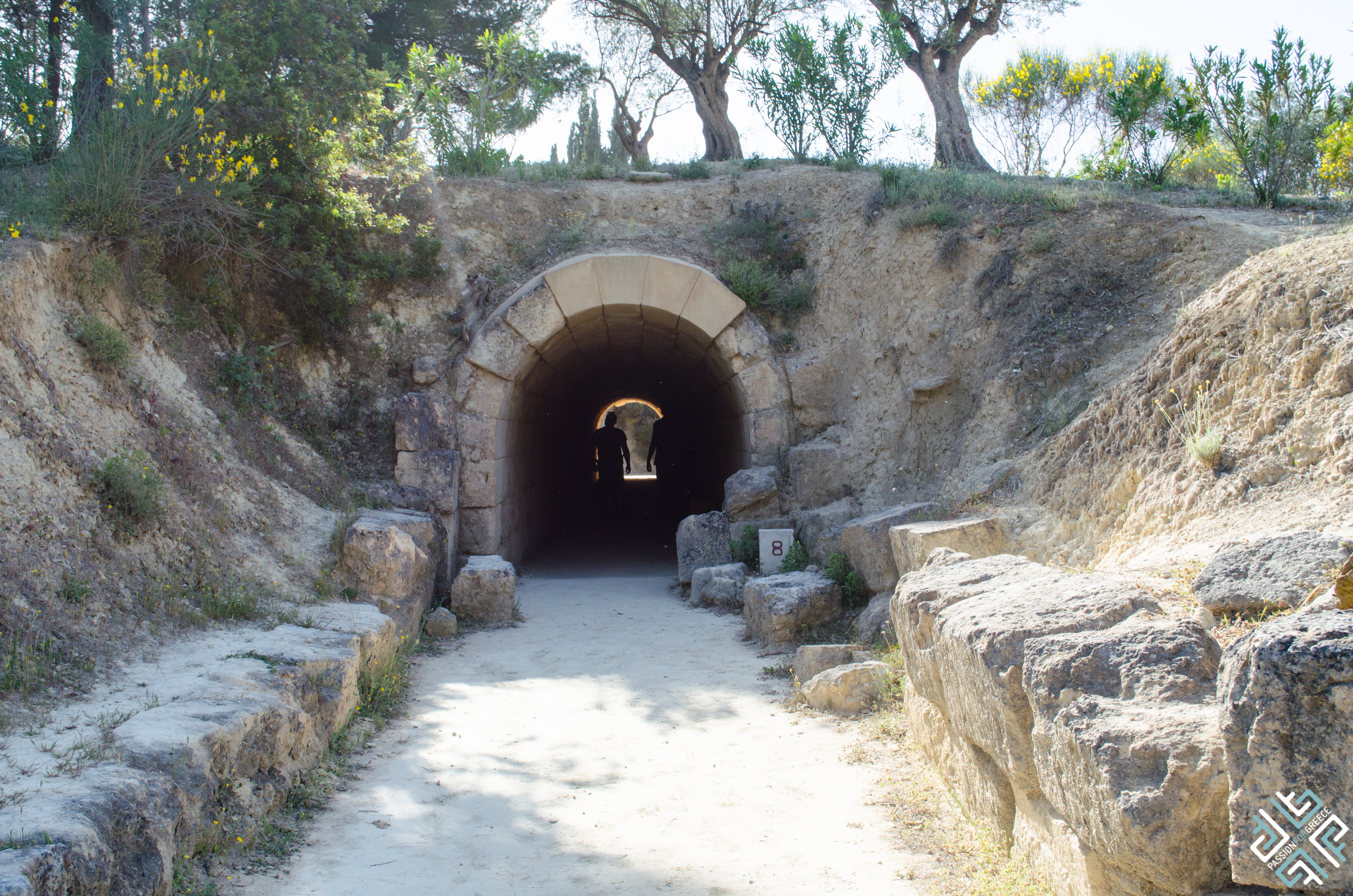
The remains of the stadium which can be seen today are the Krypte Eisodos a hidden entrance 36 meters long through which the athletes would pass to enter the stadium and a few columns which are the remains of a building which was used as a changing room.
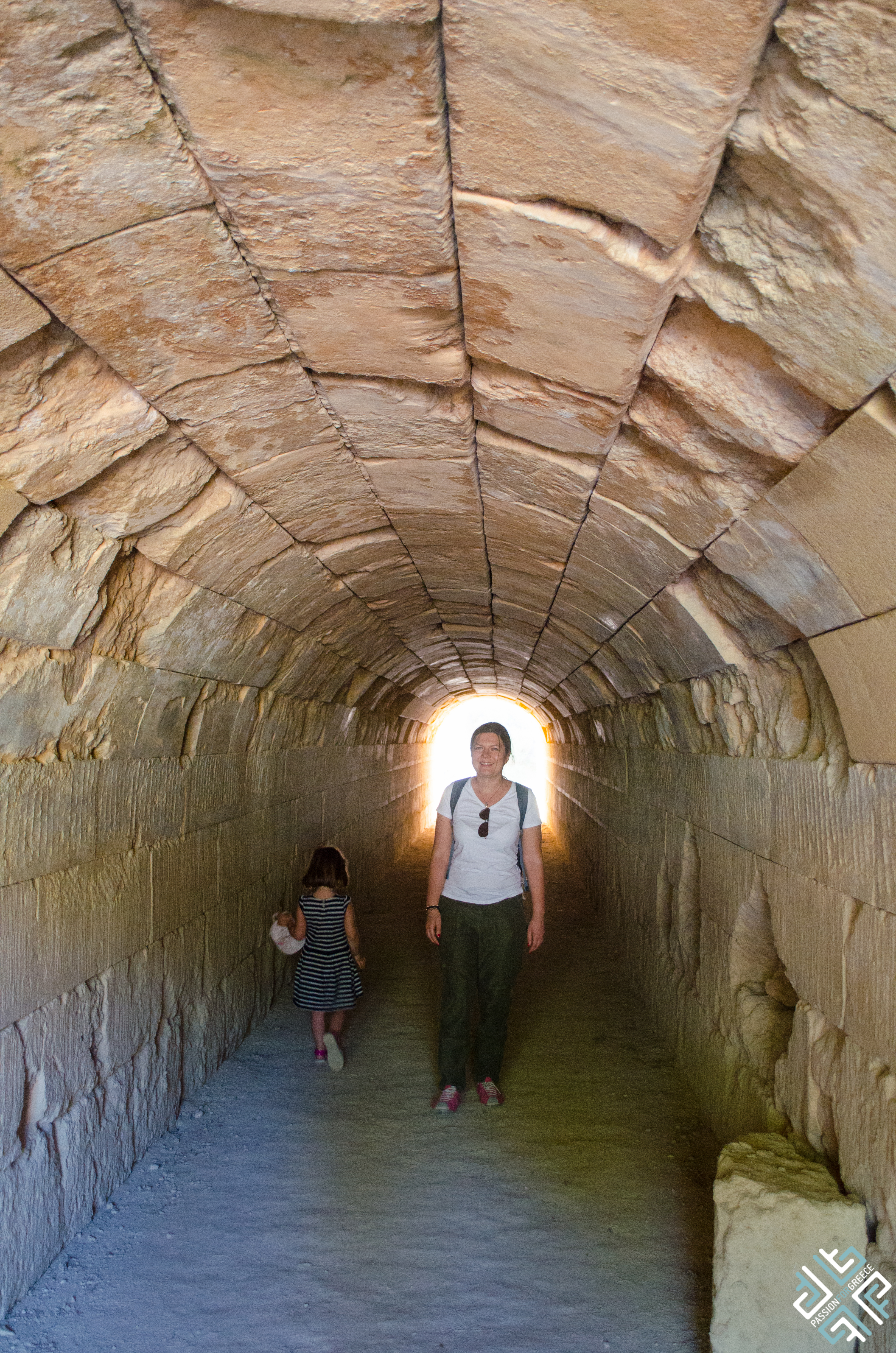
We then returned to Athens after a full day of Wine Tasting in Nemea. Have you been to any of the Nemea wineries?
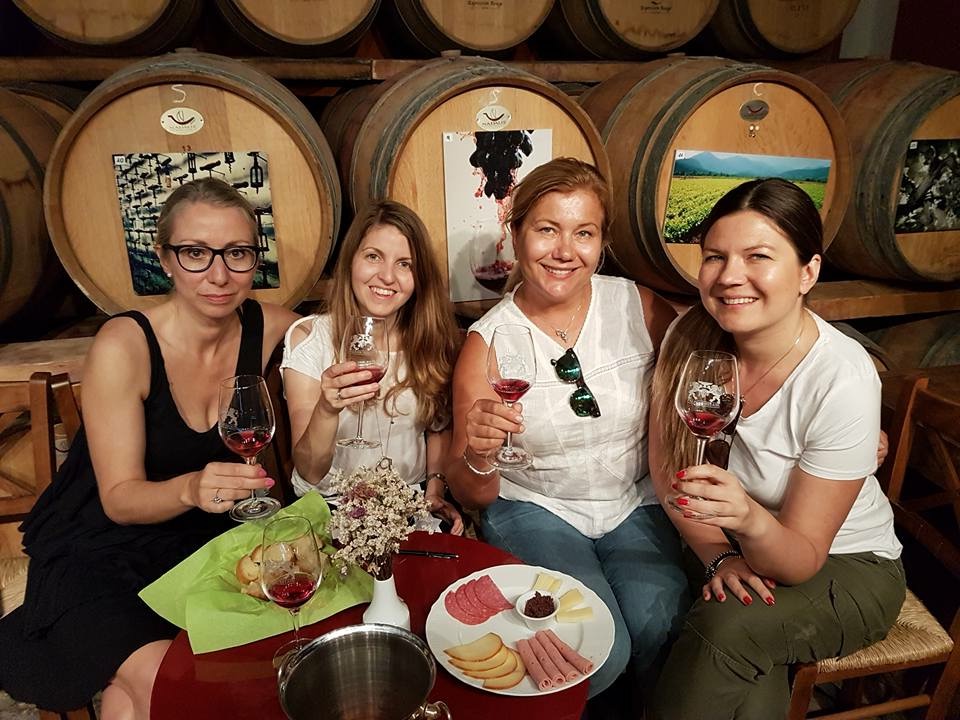
The post Wine Tasting in Nemea appeared first on Passion for Hospitality.
